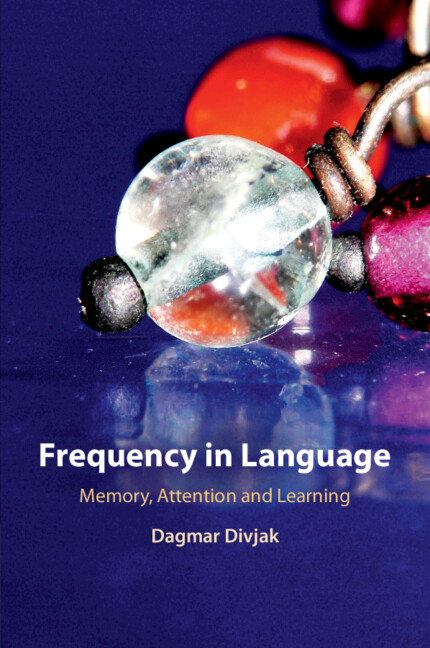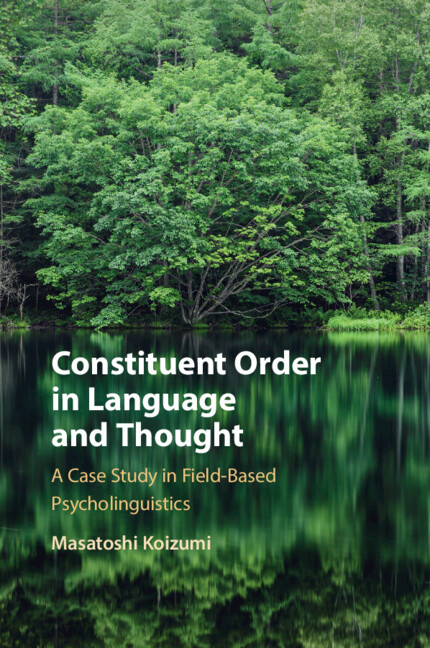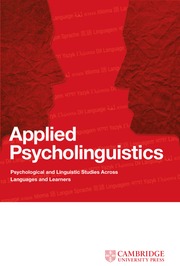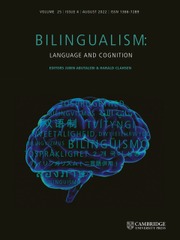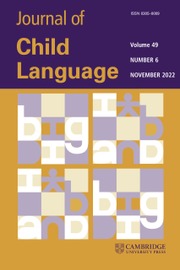Frequency in Language
Cognitive linguists are bound by the cognitive commitment, which is the commitment to providing a characterization of the general principles governing all aspects of human language, in a way that is informed by, and accords with, what is known about the brain and mind from other disciplines. But what do we know about aspects of cognition that are relevant for theories of language? Which insights can help us build cognitive reality into our descriptive practice and move linguistic theorizing forward? This unique study integrates research findings from across the cognitive sciences to generate insights that challenge the way in which frequency has been interpreted in usage-based linguistics. It answers the fundamental questions of why frequency of experience has the effect it has on language development, structure and representation, and what role psychological and neurological explorations of core cognitive processes can play in developing a cognitively more accurate theoretical account of language.
- Explains how frequency of occurrence made its way into linguistics language over the past century and spells out how the findings have changed the field
- Bridges the divide between cognitive linguistics and the cognitive sciences by explicitly linking work on learning, attention and memory to a usage-based analysis of linguistic complexity
- Assigns a prominent role to learning, which was longed exiled form the linguistics scene and has only recently made a comeback
Reviews & endorsements
‘This book is a compendium of concepts, theories and practices at the intersection of cognitive linguistics, corpus linguistics, quantitative linguistics, computational linguistics, psycholinguistics, neurolinguistics, and the like … students and teachers of cognitive linguistics, corpus linguistics, quantitative linguistics, computational linguistics, psycholinguistics, and neurolinguistics should read.’ Mayowa Akinlotan, LINGUIST List
‘This book presents a critical overview of language learning research, drawing attention to insights from experimental and corpus-based work as well as some of the challenges that lay ahead in understanding cognition and language learning. A key strength of this book is the way that it presents a clear and accessible account of usage-based approaches to understanding language structure, language learning, and language use. This work has important theoretical and methodological contributions for the field.’ Kevin McManus, Recommended reading mentioned in Crosslinguistic Influence and Second Language Learning
‘This eloquently written book brings to the front a foundational property of human language, our sensitivity to the frequency distribution of linguistic items. The work further discusses how this property serves as the atomistic component of several key cognitive abilities, making the book an essential read for a modern, probability-based understanding of human cognition.’ Neguine Rezaii, Harvard Medical School
Product details
June 2022Paperback
9781107449978
341 pages
228 × 152 × 18 mm
0.498kg
Available
Table of Contents
- Introduction:
- 1. Frequency of experience
- 2. A cognitive perspective on language
- 3. What this book is not about
- 4. What this book is about
- Part I:
- 5. Counting occurrences: how frequency made its way into the study of language
- 5.1. The frequency wars: the role of frequency in nativist and nurturist frameworks
- 5.2. Lexical statistics and word (frequency) lists
- 5.3. Word lists in psycholinguistics: the discovery of the (word) frequency effect
- 5.4. Word frequency distributions and the beginning of quantitative linguistics
- 5.5. Summary and outlook
- 6. Measuring exposure: frequency as s linguistic game-changer
- 6.1 Frequency and usage-based theories of language
- 6.2. Frequency measures that have played an important role in the development of usage-based theories of language
- 6.3. Summary and outlook
- 7. More than frequencies: towards a probabilistic view on language
- 7.1. Constructing a grammar from the ground up
- 7.2. probabilistic grammar
- 7.3. Probabilities link linguistics to information theory
- 7.4. Summary and outlook
- Part II:
- 8. Committing experiences to memory
- 8.1. What is memory?
- 8.2. The physiology or neurobiology of memory
- 8.3. Memory systems, memory processes and neural mechanisms of memory storage
- 8.4. Behavioural diagnostics of memory for language
- 8.5. Summary and outlook
- 9. Entrenching linguistic structures
- 9.1. Entrenchment in the mind, or in society?
- 9.2. Three types of entrenchment
- 9.3. How are repeated experiences recorded?
- 9.4. Frequently asked questions
- 9.5. Summary and outlook
- Part III:
- 10. The brain's attention-orienting mechanisms
- 10.1. Grasping the phenomenon: what is attention and what does it do?
- 10.2. Ways of deploying attention
- 10.3. Attention and memory: encoding and retrieving information
- 10.4. Summary and outlook
- 11. Salience: capturing attention in and through language
- 11.1. Capturing attention in language: linguistics versus psychology
- 11.2. Attention and salience
- 11.3. Conclusions and outlook
- Part IV:
- 12. Predicting: using past experience to guide future action
- 12.1. Predicting from stored memories
- 12.2. Memoryless prediction: Bayesian predictive coding frameworks
- 12.3. What does predictive processing mean for language cognition? 12.4. Conclusions and outlook
- 13. Learning: navigating frequency, recency, context and contingency
- 13.1. Background: learning theory
- 13.2 Applications to linguistics
- 13.3. Conclusions: the place of frequency in a learning theoretic approach to language
- 14. Conclusions
- 14.1. Why do frequencies of occurrence play an important role in usage-based linguistics?
- 14.2 How can frequency be used to explain the construction of a grammar from the ground up?
- 14.3. Memory, attention and learning in the emergence of grammar
- 14.4. Looking forward: what lessons can we learn?
- 14.5. By way of conclusion.

